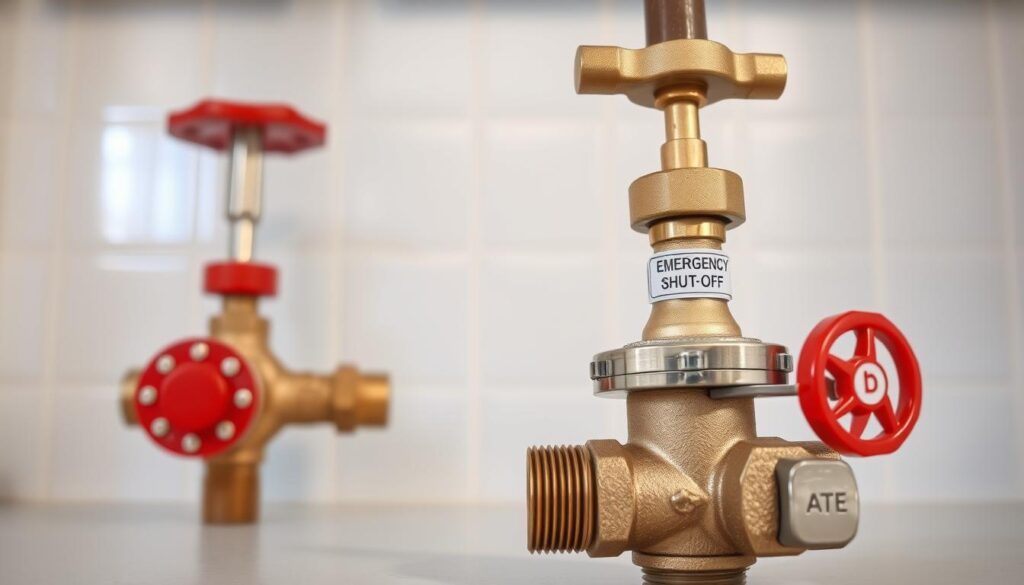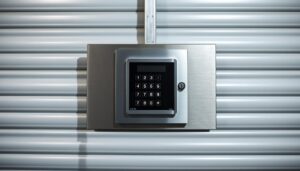Are you aware of the critical safety devices that can protect your property from costly damage during emergencies? In the UK, many homeowners are unaware of the importance of shut-off valves in preventing water damage, gas leaks, and electrical hazards.
Understanding the location and operation of these essential valves is crucial for every homeowner. Quick access to these valves can save you thousands of pounds in potential repair costs and protect your family from dangerous situations. In this guide, we will introduce you to the different types of shut-off valves found throughout your property, including main water valves and gas shut-off valves.
Key Takeaways
- Understand the critical role of shut-off valves in protecting your property.
- Learn how to locate and operate main water valves and gas shut-off valves.
- Discover how quick access to these valves can save you money and protect your family.
- Find out how to maintain your property’s shut-off valves to ensure they function properly.
- Be aware of the potential hazards of not having functional shut-off valves.
Understanding Home Emergency Shut-Off Valves
Understanding the role of emergency shut-off valves is vital for every homeowner. These valves are designed to provide immediate control over your home’s utility systems, allowing you to manage the flow of water, gas, or electricity during emergencies.
What Are Emergency Shut-Off Valves?
Emergency shut-off valves are crucial safety devices that quickly halt the flow of water, gas, or electricity in your home during emergencies such as burst pipes or electrical faults. They serve as your first line of defence against catastrophic damage, enabling you to stop the supply of utilities when a problem occurs. Asa homeowner, knowing the location and operation of these valves is key to rapid response.
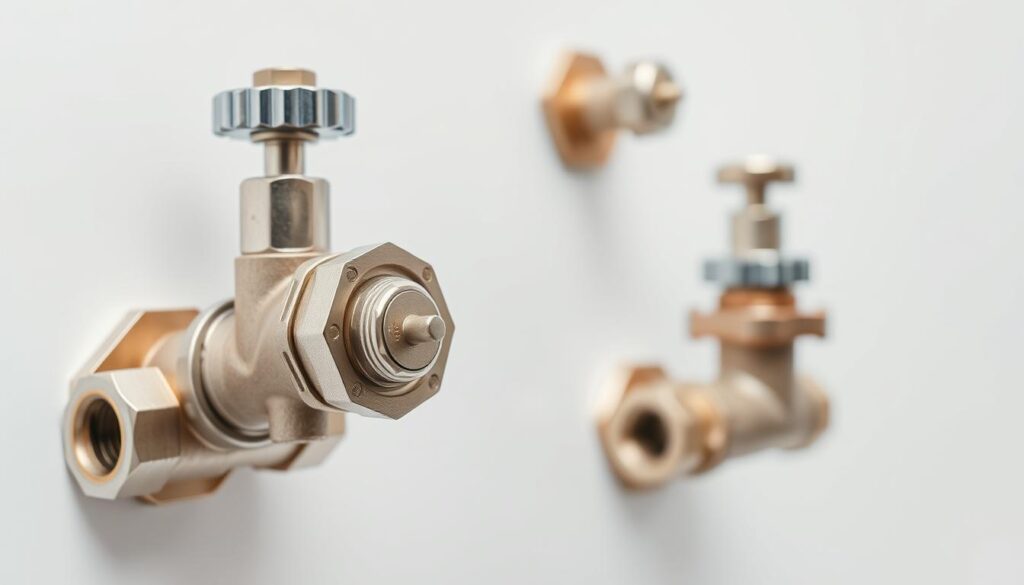
Why Every Homeowner Needs to Know About Them
Every homeowner needs to understand the importance of emergency shut-off valves because they can prevent extensive water damage from burst pipes or plumbing failures. Knowing how to operate your home’s emergency shut-off valves can mean the difference between a minor inconvenience and a major disaster requiring extensive repairs to yourplumbing system. According to experts, “having control over your home’s utility systems during emergencies can significantly reduce potential damage costs.”
Types of Emergency Shut-Off Valves in Your Home
Your home is equipped with various emergency shut-off valves that require your attention. These valves are crucial for ensuring your safety and preventing damage to your property in case of an emergency.
Water Shut-Off Valves
Water shut-off valves are essential for controlling the water supply to your home. The main water shut-off valve is typically located in the basement, utility closet, or near the water heater. It controls the water flow to your entire house, and it’s usually a gate valve or a ball valve. Individual fixture valves are also available near toilets, sinks, and appliances.
Gas Shut-Off Valves
Gas shut-off valves are critical safety devices that allow you to quickly stop the flow of gas during emergencies. These valves are usually located near gas appliances or the gas meter. Most gas appliances have individual shut-off valves on the supply line leading to the appliance.
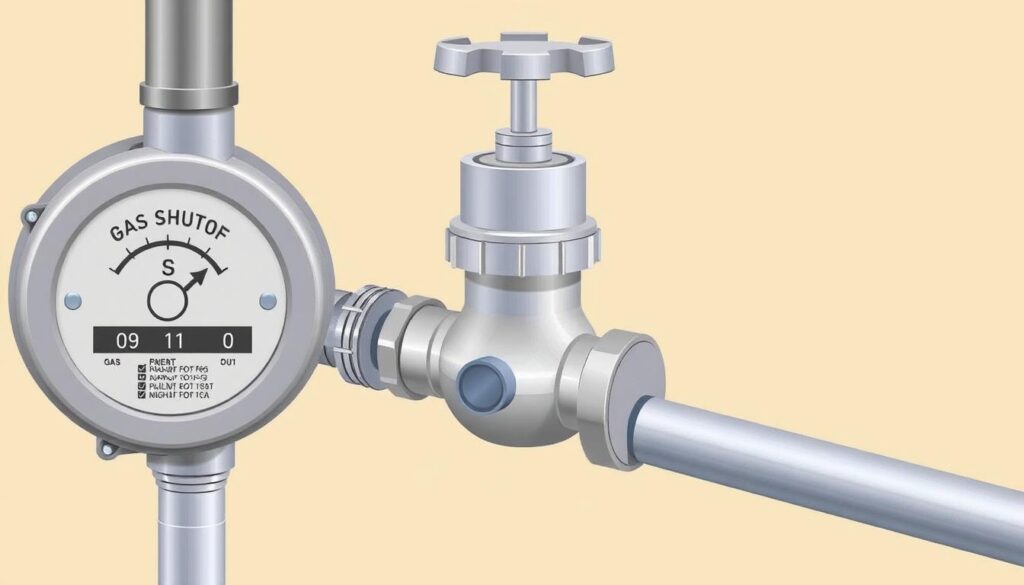
Electrical Shut-Off Switches
Electrical shut-off switches include circuit breakers in your main electrical panel and individual switches that control power to specific areas or appliances in your home. These switches are vital for preventing electrical shocks and fires during emergencies.
In conclusion, understanding the different types of emergency shut-off valves in your home is vital for responding effectively to various emergency situations. By familiarizing yourself with these valves, you can ensure your safety and prevent damage to your property.
Locating Your Home Emergency Shut-Off Valves
Identifying the locations of your emergency shut-off valves is a critical step in home safety and emergency preparedness. Knowing where these valves are located enables you to take swift action in case of an emergency, potentially saving your home from significant damage.
Finding Your Main Water Shut-Off Valve
The main water shut-off valve is typically located where the main water supply line enters your house. This is often in the basement, crawl space, or utility room near the water meter. In UK homes, the inside stop valve (also called a stopcock) is commonly found under the kitchen sink, in an airing cupboard, under the stairs, or near the front door where the main water pipe enters the property.
Locating Gas Shut-Off Valves
Gas shut-off valves are strategically placed throughout your home. The main valve is typically located near your gas meter outside the house. Individual valves are usually found near gas appliances like boilers, cookers, and water heaters. Familiarizing yourself with these locations can help you shut off the gas supply quickly in an emergency.
Identifying Electrical Shut-Off Points
Electrical shut-off points include your main consumer unit (fuse box), which is usually located in a utility room, garage, or under the stairs. This unit contains the main switch that cuts power to the entire house. Knowing the location of your electrical shut-off points is crucial for safety during electrical emergencies.
Creating a simple map or diagram of your home showing the locations of all emergency shut-off valves is an excellent way to ensure everyone in your household knows where to find them during an emergency. Taking the time to locate these valves before an emergency occurs can save precious minutes when dealing with a burst pipe or other utility emergency.
How to Use Emergency Shut-Off Valves Properly
In an emergency, knowing how to properly use shut-off valves can prevent significant damage. Emergency shut-off valves are designed to control the supply of water, gas, and electricity to your home. Understanding how to operate these valves is crucial for maintaining a safe home environment.
Step-by-Step Guide to Turning Off Water
To turn off the water supply, locate the main shut-off valve and turn it clockwise until it stops. This may require several full rotations. It’s essential not to use excessive force, as this could damage the valve. After shutting off the main water supply, open a tap at the lowest point in your house to drain the remaining water from the pipes.
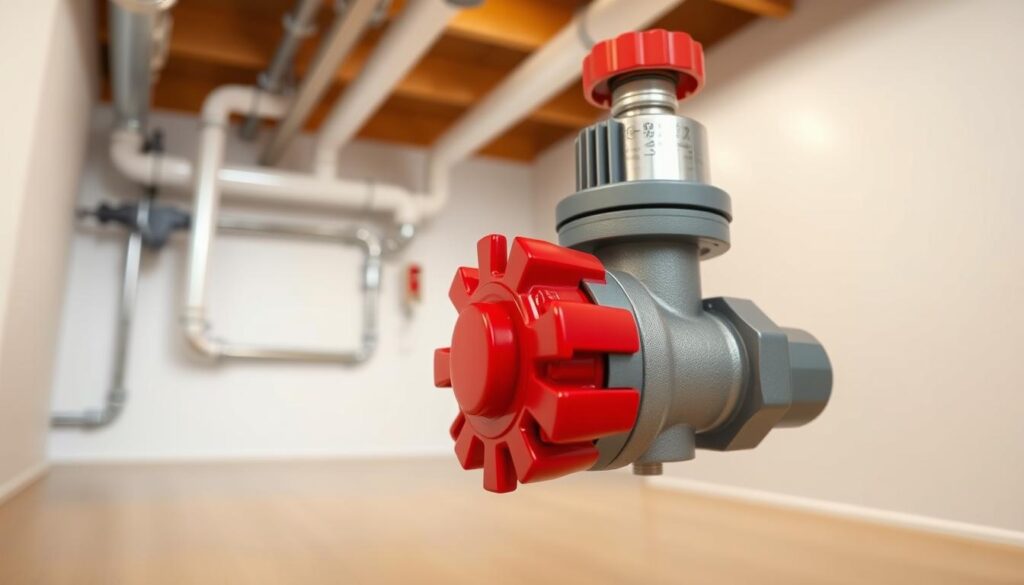
Safely Shutting Off Gas Supply
For gas emergencies, the gas shut-off valve should be turned so that the handle is perpendicular to the pipe. This indicates that the gas supply is off. It’s crucial to be cautious when handling gas shut-off valves to avoid any potential leaks or hazards.
Cutting Electrical Power in Emergencies
When dealing with electrical emergencies, always approach the consumer unit (fuse box) with dry hands and stand on a dry, non-conductive surface. Switch off the main power to cut electrical supply to your home. This simple action can prevent electrical shocks and other hazards.
| Emergency Type | Action Required | Precautions |
|---|---|---|
| Water Emergency | Turn main shut-off valve clockwise | Avoid excessive force |
| Gas Emergency | Turn gas shut-off valve perpendicular to pipe | Be cautious of potential leaks |
| Electrical Emergency | Switch off main power at consumer unit | Use dry hands and stand on a dry surface |
Maintaining Your Home’s Shut-Off Valves
To guarantee the effectiveness of your shut-off valves during plumbing emergencies, regular maintenance is essential. Your home’s shut-off valves are critical components that require periodic testing to ensure they function correctly when needed.
Regular Testing Schedule
Establishing a regular testing schedule for all your home’s shut-off valves is crucial. Set a reminder to test your main water shut-off valve at least every six months by turning it off and on. This simple action helps prevent the valve from seizing up due to mineral deposits or corrosion, ensuring it works when you need it most.
Common Maintenance Issues
Common issues with shut-off valves include mineral buildup, corrosion, leaking around the valve stem, and handles that become loose or break off over time. For valves that are difficult to turn, apply a silicone-based lubricant to the valve stem. However, avoid using oil-based products as they can deteriorate rubber components within the valve.
When to Replace Faulty Valves
Signs that a valve may need replacement include persistent leaking even when fully closed, excessive corrosion, or an inability to completely stop water flow when in the closed position. If you notice any issues during routine maintenance, address them immediately to avoid significant damage in an emergency. For older homes, consider consulting a professional plumber to evaluate whether your original shut-off valves should be upgraded to more reliable modern valves.
By following these maintenance tips, you can ensure your shut-off valves are in good working condition, ready to handle any plumbing emergency that may arise.
Choosing the Right Shut-Off Valves for Your Home
When it comes to safeguarding your home, choosing the right shut-off valves is a decision that shouldn’t be taken lightly. The type of utility the valve controls is the first consideration. Each utility—be it water, gas, or electrical systems—requires the appropriate valve type to operate properly.
Valve Types and Their Applications
Different applications require different types of shut-off valves. For instance, ball valves are excellent for main water lines due to their reliability and quarter-turn operation. On the other hand, gate valves may be more suitable for applications where gradual flow control is needed. For water applications, consider compression valves for ease of installation in tight spaces.
Material and Durability Considerations
The material of the shut-off valve is a significant indicator of its durability. Brass and stainless steel are widely used for water and gas distribution systems due to their corrosion- and wear-resistant properties. These materials ensure long-lasting performance, making them ideal choices despite their higher initial cost.
Professional Installation vs. DIY
While DIY installation of shut-off valves is possible for those with plumbing experience, professional installation is recommended to ensure proper fitting and compliance with local building codes, especially for gas valves. A professional plumber can advise on the best valve types for different areas of your property, considering factors like water pressure and accessibility. For more information on the importance of automatic shut-off valves, visit Integrity Repipe.
Conclusion
By familiarising yourself with your home’s shut-off valves, you’re taking a proactive step towards protecting your property. Understanding your home’s emergency shut-off valves is an essential aspect of responsible homeownership that can save you from costly water damage and dangerous situations.
Knowing the locations of all shut-off valves in your property allows you to act quickly in case of emergencies such as burst pipes, gas leaks, or electrical faults. Regular maintenance and testing of your shut-off valves ensures they’ll function properly when you need them most, preventing minor issues from escalating into major plumbing emergencies.
Whether you’re dealing with a leaking sink, a burst pipe, or need to turn off your water supply for repairs, having functional shut-off valves makes the process simpler and less disruptive. Consider creating a home emergency plan that includes the locations of all shut-off valves and instructions for their operation, ensuring everyone in your household knows what to do in case of utility emergencies.
If you’re unsure about the condition of your home’s shut-off valves or need assistance with maintenance or replacement, don’t hesitate to call a professional plumber for expert advice and service. Investing time in understanding your home’s plumbing system and emergency shut-off points is one of the most practical steps you can take to protect your property and ensure your family’s safety.
